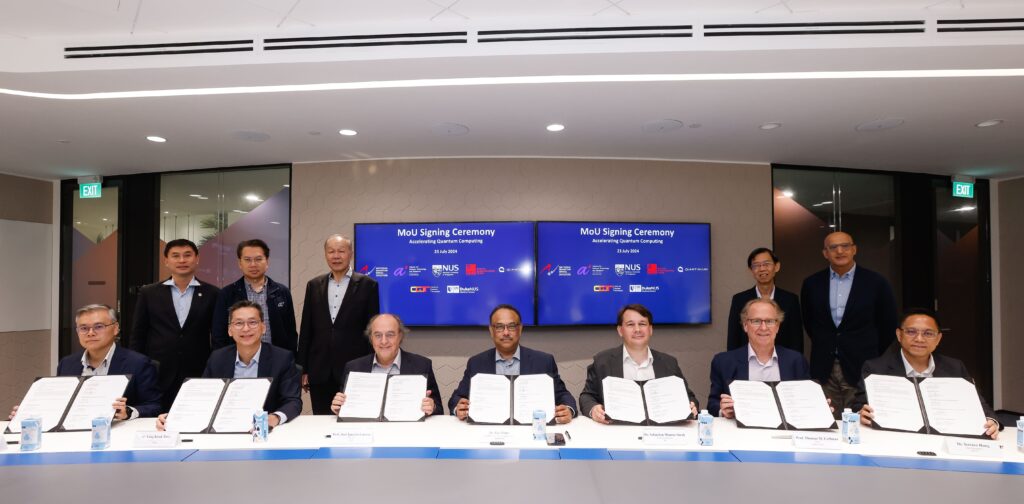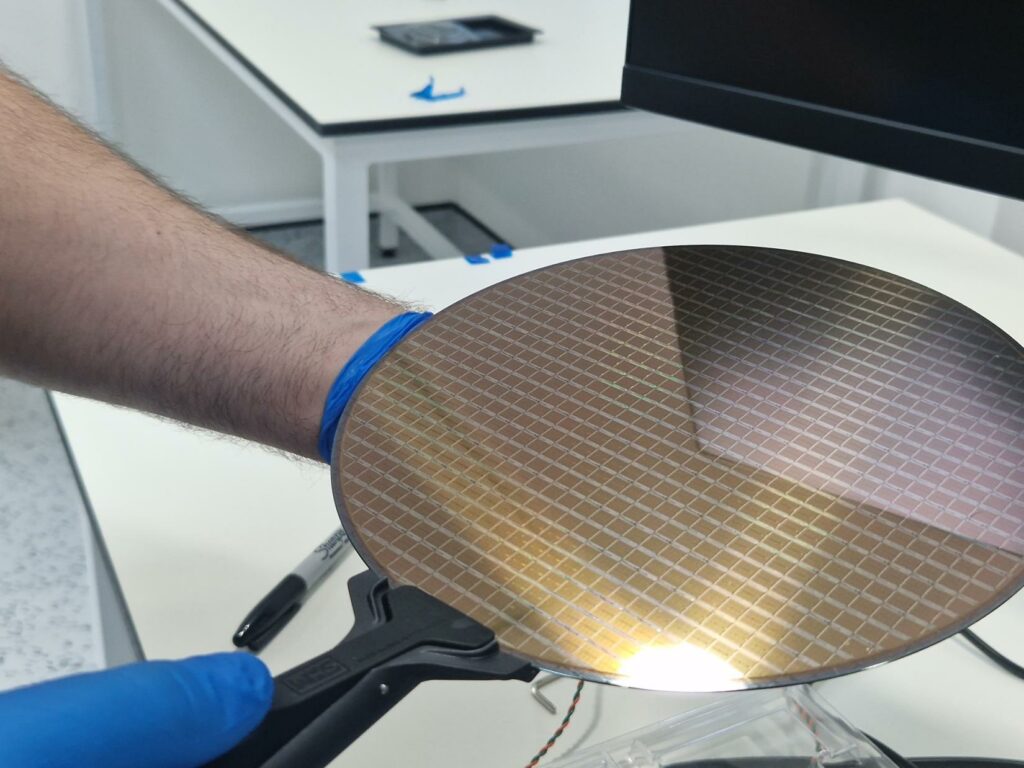
Amazon didn’t become a trillion-dollar giant by ignoring customers. The company is obsessed with its customers. That customer-centric philosophy extends from the top ranks of Amazon leadership, through the company’s Amazon Web Services (AWS) cloud computing platform, down to the quantum world that is being explored by AWS’s Amazon Quantum Solutions Lab, according to two of the company’s quantum leaders.

While many companies may be lured into the magic and mystique of quantum, Amazon’s quantum experts are there to provide services and products for its end users, according to Simone Severini, Director, Quantum Computing, AWS and a professor of physics of information, University College London.
“Quantum computing has been a great adventure so far,” said Severini. “I specifically appreciate that, at AWS, we approach quantum from the standpoint of the customer. Everything that we do here starts with a conversation with the customers. This has been extremely valuable to me to learn what is valuable to our customers, especially at this stage in quantum computing.”
Although AWS has been looking into quantum years ago, the team recently felt that the technology had progressed enough — and, again, by based on their customer needs — decided that the market was ready for Amazon Braket.

“We felt the stars were aligning, we felt that there were enough new technologies emerging and there was a sufficient operational capacity to them,” said Richard Moulds, general manager, Amazon Braket.

The team takes a three-pronged approach to bringing quantum to those customers.
“We look at these as three legs of the same stool with the goal at the end is to realize a production quantum computing platform that has meaningful performance and impact for customers,” said Moulds.
Braket
Launched in 2019, Braket grew as a technology to provide access to what the team saw as a rapidly growing ecosystem of quantum software and hardware providers, along with a growing group of educators and teachers who could boost the community. Braket became a pioneering system, opening up different types of technologies as part of a public cloud platform.
“We felt there was enough of a community to really get the most out of a quantum platform, so that’s why we launched Braket,” said Moulds. “It’s designed to get people up and running quickly, removing the barriers to playing with this technology and fundamentally trying to be a catalyst for innovation.”
“Fundamentally, AWS all about enabling third parties to build other services and build applications on top of the platform — and that’s exactly the same with quantum computers.”
Prior to Braket, Moulds said the market was fragmented from a user perspective with individual quantum hardware providers creating software for their systems. The heart of the Braket platform is to provide a range of services that can take the rapidly evolving technology of quantum into account and deliver the ability to scale to customers.
He added that several quantum software companies have built their services on top of the Braket platform already, which is precisely what Amazon is trying to encourage.
“Fundamentally, AWS all about enabling third parties to build other services and build applications on top of the platform — and that’s exactly the same with quantum computers,” said Moulds.
He said QCI, Zapata, QC Ware, are just some of the quantum software companies that are using Braket as the backend of their apps and services.
For Severini, Braket is all about accelerating discovery.
“Of course, it’s early days in quantum computing, but we want to make sure that we are part of the customers choices,” said Severini.
Amazon Quantum Solutions Lab
The next leg on the AWS quantum stepping stool is its quantum solutions lab. Think of Amazon Quantum Solutions Lab as almost like professional services organization that links customers with the brightest minds of quantum technologies. The lab is a collaborative research program that allows customers to connect with and work with leading experts in quantum computing, among other technologies.
Lab experts guide customers into a deep dive about the science of quantum computing, understand the development of quantum algorithms and solutions and build an organization’s quantum team to pave the way for quantum readiness. Because AWS is a global-leading provider of all computational tools, the team works with customers to find the correct solution to their challenge, not just a quantum one. They investigate quantum solutions, classical solutions, and even hybrid approaches.
AWS Center for Quantum Computing
The third leg of the stool is the AWS Center for Quantum Computing, the research and development headquarters, hosted at California Institute of Technology, or Caltech.
AWS announced a partnership with Caltech to establish the AWS Center for Quantum Computing in 2019. The center aims to “develop more powerful quantum computing hardware and software, and to identify new applications for quantum technologies.” The team at the AWS Center for Quantum Computing recently published a research paper that describes a hybrid architecture for a fault-tolerant quantum computer based on Schrödinger-cat qubits.
What Can Quantum Do?
As customers begin to explore quantum solutions for their business problems, at least initially, they tend to focus on the low-hanging fruit. But, Moulds advises that while recognizing those initial use cases is good, teams should also keep an eye on emerging solutions.
“Whenever people talk about what will quantum computing be useful for — what are the primary applications — I see the same list being trotted out: optimization problems, chemical engineering, materials science and the simulation of physical systems,” said Moulds. “I wonder, though, if that’s because we just don’t know yet. We think these are interesting areas.”
Quantum Investments
Currently, customers are in “understanding mode,” according to the AWS quantum leaders.
“They know the limitations. They know that a quantum computer will not give them an advantage today. But they want to understand the technology — and they want to see if they should invest in the technology.”
“The customers today understand the expectations,” said Severini. “They know the limitations. They know that a quantum computer will not give them an advantage today. But they want to understand the technology — and they want to see if they should invest in the technology.”
They also understand that waiting for quantum to mature may leave their organization well-behind early adopters – and that those early quantum adopters may be among the first to tap quantum advantage. Getting left behind at the quantum advantage stage may mean other companies will be left so far behind that they won’t catch up.
AWS quantum customers seem to recognize that this isn’t a weekend project.
“These are companies that know it takes time to build internal centers of excellence around any type of technology and particularly quantum computing,” said Moulds. “They know that if they are going to build a center of excellence in this technology it might take them three to five years or more, which means that if that’s the window in which they think that these machines will be useful, then they need to get started now.”
“There are lots of claims being made in the industry and emerging metrics. By making it public, by making it accessible, and getting away from the hype, we can make the technology available to people in as clean and as transparent way as possible.”
With huge amounts of money pouring into the quantum technology space, some experts in science and business are worried that the technology will not live up to the promise, turning a hot quantum ecosystem into a quantum winterscape.
“At the end of the day, all resources are good for this because these are really hard problems to solve,” said Moulds. “But, with increased investments comes increased expectations. And, the industry wants things to happen quickly, which means some of these expectations are going to get dashed to some degree. But, in a sense, this is one of the driving forces behind the Braket service. It’s to lay bare this technology. You can test the devices, the applications and compare them side-by-side. There are lots of claims being made in the industry and emerging metrics. By making it public, by making it accessible, and getting away from the hype, we can make the technology available to people in as clean and as transparent way as possible.”
If you found this article to be informative, you can explore more current quantum news here, exclusives, interviews, and podcasts.

















